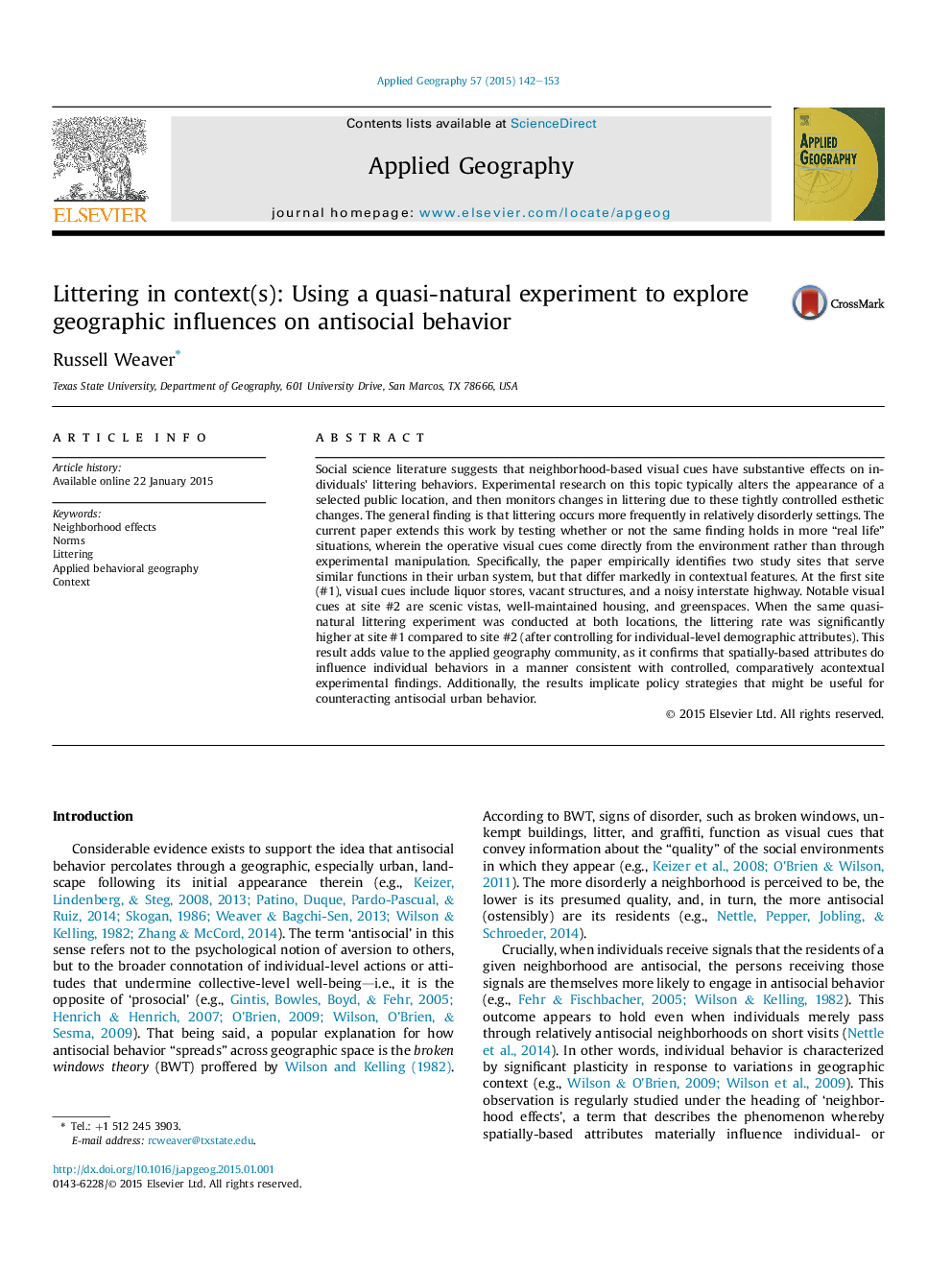| Article ID | Journal | Published Year | Pages | File Type |
|---|---|---|---|---|
| 6538622 | Applied Geography | 2015 | 12 Pages |
Abstract
Social science literature suggests that neighborhood-based visual cues have substantive effects on individuals' littering behaviors. Experimental research on this topic typically alters the appearance of a selected public location, and then monitors changes in littering due to these tightly controlled esthetic changes. The general finding is that littering occurs more frequently in relatively disorderly settings. The current paper extends this work by testing whether or not the same finding holds in more “real life” situations, wherein the operative visual cues come directly from the environment rather than through experimental manipulation. Specifically, the paper empirically identifies two study sites that serve similar functions in their urban system, but that differ markedly in contextual features. At the first site (#1), visual cues include liquor stores, vacant structures, and a noisy interstate highway. Notable visual cues at site #2 are scenic vistas, well-maintained housing, and greenspaces. When the same quasi-natural littering experiment was conducted at both locations, the littering rate was significantly higher at site #1 compared to site #2 (after controlling for individual-level demographic attributes). This result adds value to the applied geography community, as it confirms that spatially-based attributes do influence individual behaviors in a manner consistent with controlled, comparatively acontextual experimental findings. Additionally, the results implicate policy strategies that might be useful for counteracting antisocial urban behavior.
Keywords
Related Topics
Life Sciences
Agricultural and Biological Sciences
Forestry
Authors
Russell Weaver,
